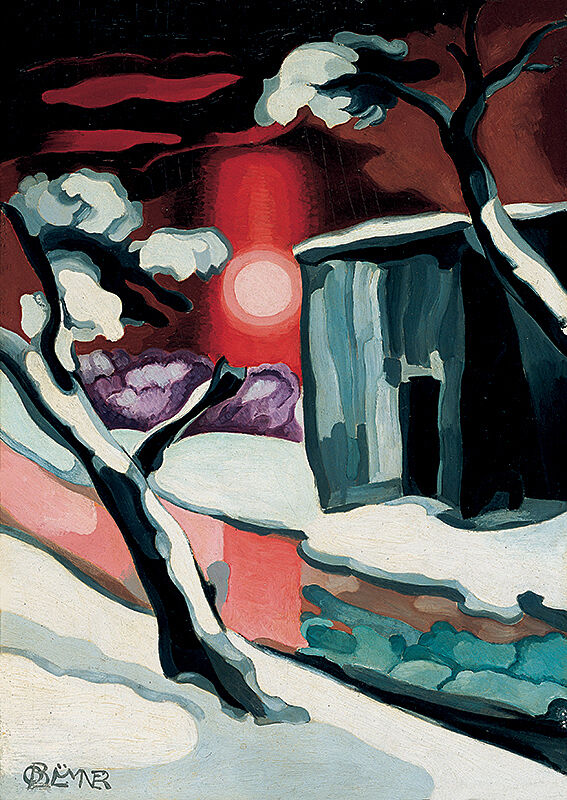On View: Oscar Bluemner, Last Evening of the Year (1929)
Jan 10, 2013
American Legends highlights works from the Whitney’s collection of American art from the first half of the twentieth century and is organized around artists that the Museum has collected in depth. Some of these artists, such as Edward Hopper, Georgia O’Keeffe, and Alexander calder, are well known; others, such as Elie Nadelman and Ralston Crawford, are less so. One of the artists in the latter category is Oscar Bluemner (1867-1938). Bluemner moved to the United States from Germany in 1892 and initially worked as an architect, but turned to painting in his late thirties. He saw early success, including a solo exhibition in 1915 at the influential 291 Gallery in New York, but his difficult personality led to an estrangement from the art world and he remained largely forgotten for the rest of his life. However, as I walked through the American Legends exhibition, Bluemner’s brightly colored landscapes left more of an impression on me than some of his better-known contemporaries. One painting in particular, the small (approximately fourteen by ten inches) canvas Last Evening of the Year, cast an odd, shimmering effect that caught my eye and drew me in for a closer look.
As with much of Bluemner’s work, the painting integrates elements from the natural and manmade worlds. A small, boxy structure—possibly a shack or cabin—stands on the bank of a canal in a wintry twilight scene. The rendering of these forms hovers between a representational depiction of the scene and a dreamlike abstraction. Anchoring this composition is a setting sun—it too, a harmonizing force between day and night as well as, according to the title, the end of one year and the beginning of another.
What most intrigues me about the painting though, stretches beyond its iconographic elements or composition. Rather, there is the sense that all of these efforts of harmony and balance are in the service of a certain phenomenological effect, a strange auratic power that the painting exerts on the beholder in the gallery space. Bluemner studied painting techniques in books from the Renaissance and mixed his paints to provide them with unique, almost alchemical properties. His palette corresponds to the colors one sees in nature, but they are intensified to the point of unreality. For example, the vermillion red used in the clouds in the upper-left hand corner lends the image a hallucinatory, nightmarish quality. When viewing the work in the gallery rather than on a screen, these colors seem to pop even more. The result is that the viewer’s relationship to the painting is physical. While the delicacy of the composition invites one in, the combination of colors, along with the highly particular luster of the surface, interact in one’s mind to run a mild, but pleasant shock through the body.
By Gene McHugh, Interpretation Fellow

